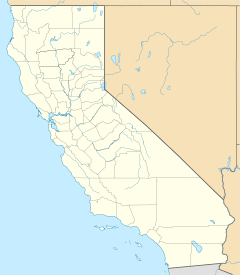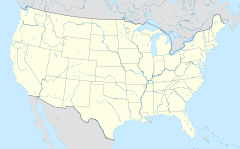Zamora, California facts for kids
Quick facts for kids
Zamora
|
|
|---|---|
| Country | United States |
| State | California |
| County | Yolo County |
| Elevation | 52 ft (16 m) |
Zamora is a small community in Yolo County, California, U.S.. It is located near Interstate 5, west of Knights Landing. Zamora has a ZIP code of 95698 and an area code 530. It sits about 52 feet (16 meters) above sea level.
Zamora was once known by several other names, including Black's, Blacks, Black's Station, Blacks Station, and Prairie. The area around Zamora is called the Zamora District. This district includes Oat Valley and Hungry Hollow.
In the past, Zamora was a busy town. It had a hotel, stores, a jail, and many other businesses. There were also schools and churches. However, in 1949 and 1969, new highways were built. These roads cut through the town, changing it a lot. Today, Zamora is much smaller. It still has a post office, a volunteer fire department, and St. Agnes Catholic Church.
Community Life in Zamora
Education for Young People
For many years, children in Zamora went to Cacheville School for kindergarten. They attended Zamora Union School for first through eighth grades. This school had two classrooms. One classroom was for younger students (grades 1-4). The other was for older students (grades 5-8).
Today, children from Zamora go to schools in Woodland, California. Older students attend Woodland High School.
The Zamora 4-H Club
The Zamora 4-H Club is an important part of the community. In 2010, the club celebrated its 80th anniversary. The 4-H Club has helped keep the community together. This was especially true after the local school closed.
Local Services
Zamora has its own post office. It also has a volunteer fire department. These services help the community run smoothly. St. Agnes Catholic Church is another important local landmark.
Economy of Zamora
Farming and Agriculture
Like most of Yolo County, Zamora's economy is mainly based on farming. Many families have owned land or lived in the Zamora District for generations. This shows how important agriculture is to the area.
Farmers in Zamora grow many different crops. Historically, grain was the main crop. However, farmers faced challenges like droughts and heavy rains. In the 1930s, new pumps helped farmers get enough water for irrigation. This allowed them to grow more types of crops. Today, they grow row crops, fruits from orchards, grapes, and alfalfa.
Olive Oil Production
The Bariani Olive Oil Co. built a processing plant west of Zamora. In 2004, it was reported that the company had a large piece of land. This land was big enough for 18,000 olive trees. It also had a large building for processing the olives.
History of Zamora
Early Inhabitants: The Patwin People
The first people known to live in this area were Native Americans. They belonged to the Patwin tribe. The Patwin people were skilled hunters and gatherers. They used bows and arrows, spears, and nets. They hunted animals like deer, elk, and ducks. They also gathered plants like acorns, wild oats, and blackberries.
European Arrival and Changes
Spanish explorers came to the area in the early 1800s. Their arrival brought big changes. Many Patwin people died from new diseases. Some were also forced to work as slaves.
Later, hunters and fur trappers came. The California Gold Rush in 1849 brought even more people. This led to more challenges for the Patwin people.
Settling the Land
European settlers began arriving in the 1850s. Some early families included the Bemmerlys, Harleys, and Burgers. Many settlers gained land through the 1862 Homestead Act. This law offered 160 acres of public land to families. They had to clear, improve, and live on the land for five years.
Part of the Zamora District was once a large land grant called Rancho de Hardy-Rio de Jesus Maria Rancho.
The Railroad and Town Growth
Between 1868 and 1888, many towns grew in Yolo County. Zamora, then called Black's, was one of them. It was named after J. J. Black, who settled there in 1865.
In 1875, the Northern Railway Company extended its railroad. When the railroad reached Black's farm, he donated land for a station. This led to the creation of Black's Station. The town was planned with blocks and lots. The first store opened in 1876. Black's Station became an important place for shipping farm products. In 1903, a water system helped the area grow. A new packing plant also made it a fruit center. In 1906, the town's name was officially changed to Zamora.
The Zamora Post Office
A post office first opened in the area in 1857. It was called Prairie Post Office. It was located at Weyand's Corner, a rural hotel and general store. Mail was delivered by stagecoach.
In 1876, the post office changed its name to Black's Station Post Office. It moved to different locations over the years, often in the postmaster's home or business. In 1915, it became the Zamora Post Office. It has moved several times since then, including to the IOOF building.
Zamora Soils
Understanding Zamora Soil
The town of Zamora gives its name to a special type of soil. The U.S. Department of Agriculture classifies it as "fine-silty, mixed, thermic family of Mollic Haploxeralfs."
Zamora soils are usually grayish-brown on top. They have a slightly acid loam. Below that, they have brown silty clay loam. These soils are found in the Sacramento Valley and other parts of California.
What Grows in Zamora Soil?
Zamora soils are very good for farming. They are used to grow orchards, row crops, and other farm products. The natural plants that grow in this soil include grasses and wild flowers. There are also widely spaced oak trees.



